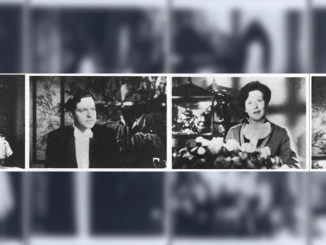
By Ray Zone
Hollywood Jobs
Finding Work Fast in TV, Film & Video
by Mike Flanagan
Cinemedia Publishing
493 pps., hardbound $59.95
ISBN: 978-0-9841570-7-5
After setting up the nationally accredited digital media company Video Symphony, Mike Flanagan has packaged 15 years of educational expertise between the covers of a massive and eminently useful book. Hollywood Jobs is packed with vital information for anyone seeking a career in the media industries, or any other industry for that matter.
Organized in seven succinct chapters, the book is built around what Flanagan calls the “Four Cs”: Companies (where the jobs are), Contacts (who knows about the jobs), Contribute (why employers will give you jobs) and Communicate (how to persuade employers to give you jobs).
The first chapter, “Telling Your Story: How to Successfully Job Search in Hollywood Production,” sets a solid context for the rest of the book by setting forth the “book’s story” and why it’s useful. Working in Hollywood entertainment involves frequent job changes and is heavily freelance and project-oriented, so the job search skills discussed in this book might easily prove repeatedly useful. Unique job-seeking skills are also necessary in the entertainment media industry.
Flanagan corrects some misperceptions about employment in Hollywood. “Contrary to popular belief,” he writes, “finding work in Hollywood entertainment is less about who you know than it is about others’ awareness of your skills and talents.” It’s a fine, but important, distinction. “In fact, Hollywood pros refrain from making references which they in any way suspect may come back to haunt them later,” he stresses.
“WI-FY [What’s in It For You] job seekers present themselves as someone who can fill the needs of the company,” – Mike Flanagan
“This makes sense of course, because the reputation of the person making a referral is on the line as well.” If the person recommended underperforms, damage may also be done to the reputation of the person who made the recommendation.
The essential thing is that “You must be genuinely good at what you do if you hope to benefit from referrals or personal relationships. You must also be adept at conveying your skills and talents to others.”
Subheadings in bold face underscore the important points that Flanagan makes. For example, the author asks the following question in a subheading: “What else makes this book distinctive?” And with bullet points he presents his own clear case. The book presents the “employer’s perspective” and carries weight because Flanagan is himself an employer at Video Symphony. The book provides “a marketing-oriented approach, including numerous useful tools and tactics” used by the businesses that will be hiring the job-seekers. One important mantra in this idea is “to focus on the employer’s needs rather than your own.” Finally, the book is an “all-in-one tool” with an exhaustive list of companies and descriptions of what they do.
Flanagan repeatedly stresses the importance of a positive attitude. And he exhibits one himself as he notes the explosion of video, audio, TV, DVD, video games and other dynamic formats that have ushered in an age of inexpensive digital media. This explosion is shifting to the desktop and into the home. Though less than 20 years old, digital media is “big business.” To Flanagan, “that means jobs” and the growth of digital media is “a sure bet.”
Periodic graphics, screen grabs and sidebars punctuate the text to make a point. Here’s an important one from Lucille Ball: “Luck? I don’t know anything about luck. I’ve never banked on it… Luck to me is something else: hard work…”
Flanagan’s “Four Cs” are great mnemonic devices to drive positive thinking. Under “Companies,” he illustrates how to find companies that might hire you and the advantages of getting a job at a small company. In “Contacts,” he emphasizes the importance of an online resource like LinkedIn, which he has characterized as one of the greatest job search tools in history. He also provides a clear discussion of trade magazines, community websites, social networks and blogs and their importance.
The book presents the “employer’s perspective” and carries weight because Flanagan is himself an employer at Video Symphony.
Perhaps the primary key to a successful job search is found under the “Contribute” section, subtitled “What’s in It for Me?” Instead of making the job search about “I-me-my,” he posits “WI-FY” as the Golden Rule of the job seeker. Flanagan suggests shifting the emphasis of the job search from “Me-centric” to “You-centric.” “WI-FY job seekers present themselves as someone who can fill the needs of the company,” he writes. And, finally, the “Communicate” section demonstrates that “Jobs often do not go to the best-qualified people,” but “often…to the best communicator” or the candidates who do “the best job of communicating their qualifications to the employer.”
Hollywood Jobs does primarily concentrate on the Los Angeles job market since about 50 percent of entertainment media production takes place there. As Flanagan has greatest familiarity with video and film editors, they are the “stars of most examples” that he cites. But the level-headed advice contained in the book is applicable to job markets outside of Los Angeles, as well as those outside of the media entertainment industry.
Throughout the book the importance of organization, persistence and focus as well as expertise is stressed. These qualities are integral to any job search in any field but aspiring post-production professionals and editors will get the best use out of this highly pragmatic volume.
Flanagan refutes the frequently uttered mantra: “There’s no work out there.” Then he shows you how to find the work, get it and get paid for it. A book can’t be anymore useful than that.





